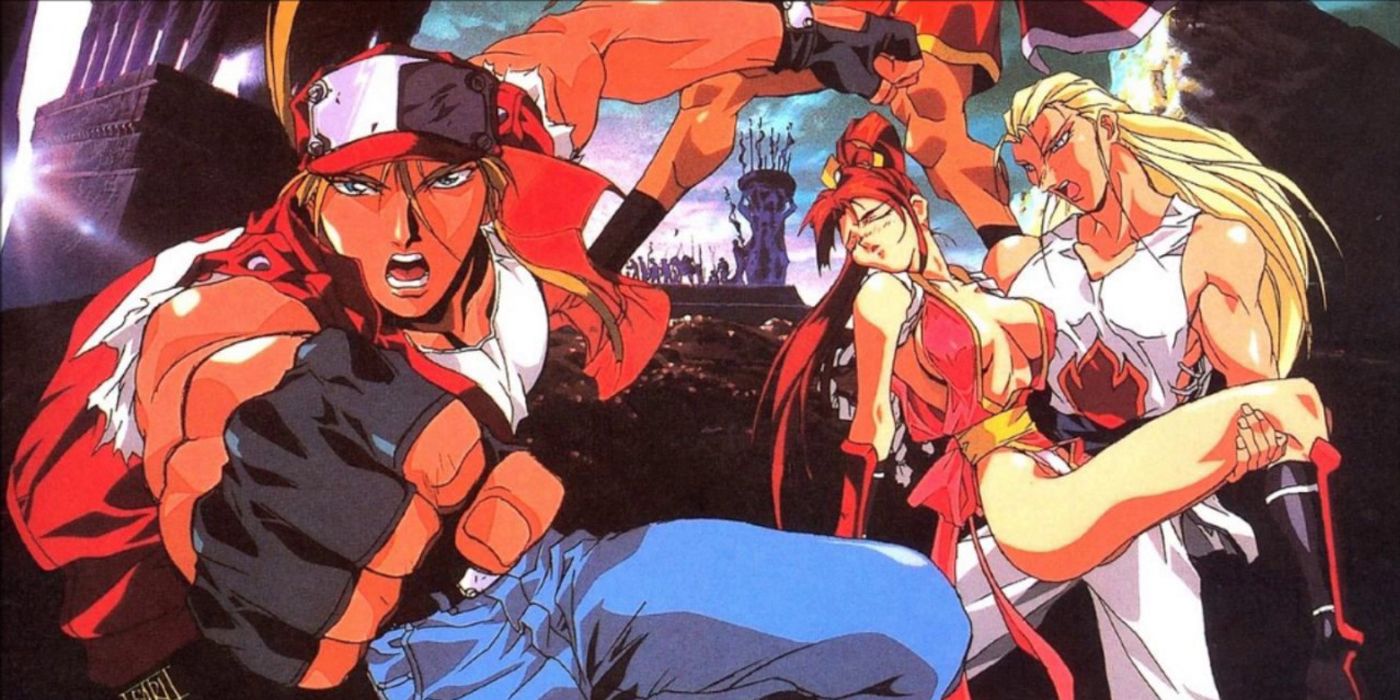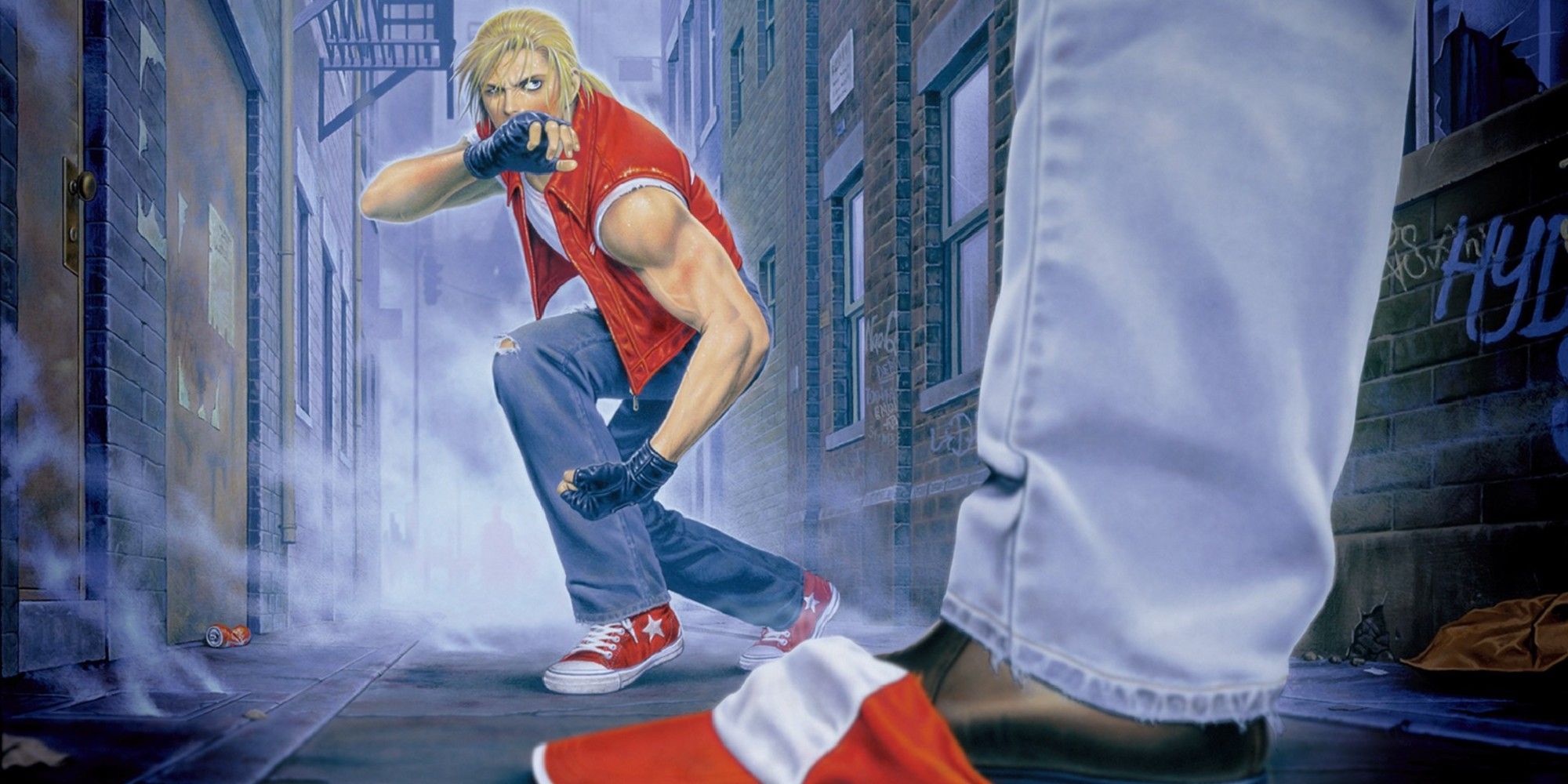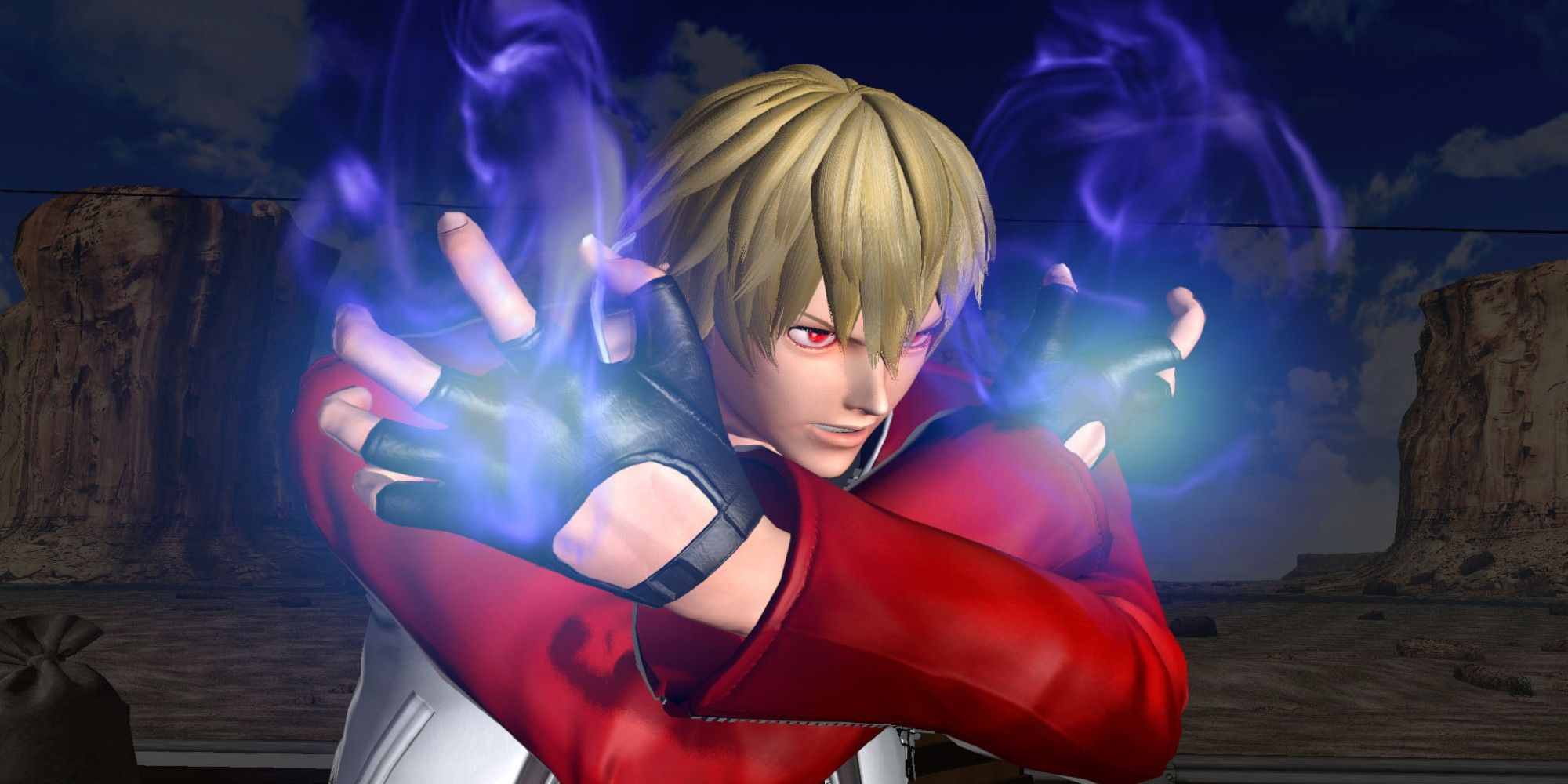The King of Fighters series is easily SNK's biggest franchise, as well as one of the biggest names in fighting games. Based around an eponymous martial arts tournament held in the fictional Southtown, the series unites original characters with veterans from classic SNK franchises. One such franchise is Fatal Fury, which itself is one of the most iconic fighting games in history.
Usually starring a duo of brothers in their quest to defeat their father's criminal kingpin killer, the series started as SNK's answer to Capcom's Street Fighter. Though now eclipsed by the franchise of the same name, Fatal Fury is also the origin of the King of Fighters tournament that's ubiquitous within SNK lore. Here's how the first appearance of Terry Bogard paved the way for SNK's biggest crossover.
Fatal Fury: The King of Fighters
The franchise began with 1991's Fatal Fury: King of Fighters. The game was designed by Takashi Nishiyama, who also created the original 1987 Street Fighter. This new SNK title was very much made in the same vein as that game, and is spiritually more of a sequel to it than Street Fighter II was. For this reason, only a few of the game's characters are playable, much like how only Ryu and Ken could be used in their first game.
The story revolved around brothers Terry and Andy Bogard, who sought revenge against crime lord Geese Howard for the murder of their father, Jeff. Along with Muay Thai champion Joe Higashi, they enter Geese's "King of Fighters" tournament in their home of Southtown. Canonically, Andy and Joe are defeated in the tournament against some of Geese's enforcers, but Terry is able to defeat all of the remaining opponents, including his former mentor Tung Fu Rue.
This leads to Terry being taken to face Geese himself in one-on-one combat atop Geese's tower. Despite Geese's skill, Terry defeats him and sends him flying out of the tower to his seeming death. While this seemed to be the end for Geese, it was only the beginning of a highly successful series of SNK brawlers.
The Legend of the Hungry Wolf
Two more entries in the original Fatal Fury series were quickly be released, with the third revealing that Geese was actually still alive. Real Bout Fatal Fury, the fourth game, would end his reign of evil once and for all, though the game received two upgrades that changed gameplay mechanics and added new characters. A 3D spinoff titled Fatal Fury: Wild Ambition retold the story of the first game, retconning characters introduced in the sequel as having taken part of the original tournament.
The series would finally end in 1999's Garou: Mark of Wolves. This title may have seemed confusing in the West, but in Japan, the Fatal Fury series was always known as Garou Densetsu, or Legend of the Hungry Wolf. This gorgeously animated title would have Terry Bogard raising Geese Howard's son Rock as they both compete in a new King of Fighters Tournament.
This tournament would also be used in SNK's The King of Fighters series. These games, which began in 1994, featured a brand new continuity initially centered around new characters like Kyo Kusanagi. However, several classic fighters were also in on the duel. Among them was Terry Bogard, whose "Fatal Fury Team" consisted of himself, Andy and Joe Higashi. Terry has been a constant of these games, and he has gone on to represent both Fatal Fury and King of Fighters in Nintendo's Super Smash Bros. Ultimate.
The original game would also be adapted into the animated TV special ,Fatal Fury: Legend of the Hungry Wolf. Since Garou's release, pretty much all of SNK's fighting games besides Samurai Shodown have taken a backseat to King of Fighters, including Fatal Fury. The next game in the series, The King of Fighters XV, is now on the way, with characters who got their start in Fatal Fury already confirmed to be playable. Nevertheless, this franchise would never have even gotten its name if it wasn't for a certain blond fighters in a red cap.



